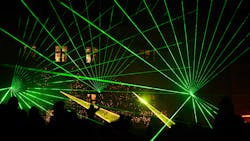There’s No “Magic” in Low-Quiescent-Current Designs (Download)
During my electronic circuit design career from 1972 to 2013, I had many applications for low-power, low-quiescent-current designs. These kinds of designs will greatly challenge designers to optimize a solution that meets the overall required system performance, in addition to keeping the quiescent current at or below the power performance goal.
Silicon Devices Then and Now
Back in 1947, low-power Silicon electronic devices began to appear on the scene, when vacuum power tubes, with their excessive power needs, began to be replaced by the industry-changing, orders-of-magnitude smaller in size and power draw, point-contact transistor. Bell Labs’ John Bardeen, Walter Brattain, and William Shockley rocked the electronics world.
